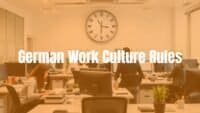The German Industrial Revolution was a period of great change, mainly from the mid-1800s to the early 1900s. During this time, Germany went from being a loose group of rural states to a strong and united industrial nation. This era brought new ways of working, big growth in factories, and many people moving to cities. German industry grew quickly, leading to more products and exports, and Germany became an important country in Europe and beyond. Unlike Britain, where industry started with textiles, Germany’s rise came from coal, steel, and building railways, taking its own approach to industrial growth.

This time was about more than just new machines. It changed German society, replaced old ways of living, and created new groups and classes of people. The focus on education, science, and heavy industry continued to help Germany stay strong in industry and technology even in later years.
Germany Before Industrialization
Before factories and railways, Germany was made up of many small states, each with their own rules and ways of doing things. Most people were farmers, and life mostly followed old traditions. It was not easy for Germany to begin the process of catching up with other countries in industry.
Political and Economic Barriers
Germany was divided into many areas, each with different laws, currencies, and taxes. After the end of the Holy Roman Empire in 1806, these divisions remained, meaning there was no single market for trade. This lack of unity made it very hard to start large factories or produce products on a big scale. Goods could not move freely, and manufacturing remained small compared to places like Britain, which already had one market and better roads and canals.
Events like the Reichsdeputationshauptschluss changed the borders, but Germany still lacked a common economy, which made industrial growth slower at first.
Small-Scale Industry and Early Manufacturing
Even before true industrialization, some regions in Germany did have basic forms of industry. The “putting-out system” allowed many families, especially in poorer areas, to work from home making linen and other goods to sell across the country. By about 1800, almost a million people did this type of work.
Early factories, called manufactories, started appearing, providing jobs for around 100,000 people. Some areas, like Bergisches Land and the Chemnitz region, focused on metalwork and textiles. These centers gathered the money and skills that would later help start bigger factories.

The German Industrial Revolution: An Overview
Industrialization in Germany was a turning point that shifted the country from farming to industry. Germany’s development was unique, with its own timeline and areas of focus, especially heavy industry rather than textiles.
Timeline and Major Stages
The beginnings of industry showed up around 1815-1835, after the Napoleonic Wars. At this time, German businesses had to compete with British industry. The first examples of new factories were the textile plant in Ratingen (1784) and the use of steam engines for mining in Hettstedt (1785), but these were rare.
The actual “industrial takeoff” came between the 1830s and 1873. A critical step was the creation of the Zollverein (Customs Union) in 1834, which ended many internal tariffs and built a common market. After the 1848/49 revolution, industrialization sped up further, especially in coal, steel, and machinery, mostly to build railways. By the end of the 1800s, German industry, including chemicals and electrical engineering, was booming.
How It Compared to Britain
Britain was first to industrialize and focused mainly on making textiles. Germany, however, built its strength on coal, steel, and railroads. Because Germany started later, it could use newer inventions right away, especially in making metals and machinery.
In Britain, private business people led the changes, but in Germany, the government got more involved, for example by building railways. Big, strong banks also played a big role by giving companies the money needed to grow. Thanks to this, and a focus on science and technical schools, Germany was soon leading the world in some industries.
Main Reasons for the German Industrial Revolution
Germany’s industrial rise happened because lots of important factors worked together. The list below shows the biggest reasons:
- New Technology and Science: German universities and technical schools turned out many engineers and scientists. They quickly used new theories and inventions in industry, such as the four-stroke engine (Cologne, 1876), and adopted the puddling and Bessemer methods for making better iron and steel.
- Natural Resources: Germany had large supplies of coal and iron, especially in areas like the Ruhr. These raw materials were key for building factories and railways.
- Government and Tariffs: The Zollverein (1834) ended many taxes and tariffs inside Germany, making it easier for business. After Germany unified in 1871, the government put tariffs in place to protect local businesses, and invested in big projects like building railways.
- Education and Research: Reforms in schooling made sure there were many skilled workers and inventors. Technical schools grew into universities, and research centers were founded, leading to breakthroughs in fields such as chemicals and electrical engineering.
- Banks and Financing: At first, private bankers helped fund the railroads. Later, big “universal banks” like the Bank für Handel und Industrie provided both long-term and short-term loans for factories. This helped create large companies that could control entire industries.

Main Industries and Technologies
Several sectors led the way in German industrial growth. The table below shows the key industries and some important innovations:
| Industry | Main Products/Innovations |
|---|---|
| Iron & Steel | Puddling and Bessemer processes; steel for railways; companies like Krupp and Gutehoffnungshütte |
| Chemicals | Synthetic dyes, pharmaceuticals; major firms: Bayer, BASF, Hoechst |
| Railways | Tracks, locomotives, rapid growth in railway networks |
| Mining | Coal and iron mining with deep shafts, use of steam engines |
| Machinery | Steam engines, tools, machine-building |
| Textiles | Wool and cotton; early but less important than in Britain |
Business Structures and Company Growth
Family businesses once led the way, but over time, companies needed more investment. By the 1870s, most large firms became stock corporations, raising money from many investors. Companies often controlled every step, from raw materials to final products, making them more efficient and powerful.
Regional Differences Within Germany
Industrialization did not happen equally everywhere in Germany. Each region’s growth depended on its resources, location, and existing businesses.
- Ruhr and Rhineland: The Ruhr area, part of Westphalia and the Rhine, had huge coal fields that supported heavy industry. New railroads linked the area to the rest of Germany, and factories like Krupp’s in Essen grew rapidly.
- Saxony and Silesia: Saxony, around Chemnitz, became a center for machinery and textiles. Silesia, especially Upper Silesia, started early with coal and iron mining and used new English methods, but later lagged due to distance from major trade routes.
- Other Centers: Berlin attracted various industries and banks. Cities like Munich and Stuttgart grew in machinery and newer manufacturing fields, while some older trade regions fell behind, losing business or returning to farming.

How Society Changed
Industrialization brought major changes in how people lived and worked in Germany. The most important effects included:
- City Growth and Population Movement: Many people left farms for city factory jobs. Towns quickly became large and crowded. In 1871, two-thirds of Germans lived in rural areas; by 1910, fewer than half did. Between 1850 and 1860, over 1 million Germans emigrated, but later more moved to cities within Germany instead.
- New Social Classes: A new middle class (the bourgeoisie) of managers, factory owners, and professionals grew. At the same time, millions of people became factory workers, forming the working class, living in crowded neighborhoods and facing hard conditions.
Factory work meant low pay, long hours, and little job security. Many traditional hand workers lost their work and fell into poverty. Over time, workers began forming unions to demand better pay and hours. Real wages rose and working hours fell as labor organizations grew stronger, and later, the government started setting up social welfare programs.
Economic Ups and Downs in This Period
The German Industrial Revolution was not steady growth all the time. There were periods of fast expansion, but also setbacks:
- Growth – After 1850, production soared, thanks to new industries and population growth.
- Crises – The Panic of 1857 hit Germany hard, mainly as a banking and trade crisis. The economy bounced back, but new challenges came in the early 1860s, for example, from the American Civil War which hurt the cotton trade. The biggest boom, called the “Founders’ Boom,” ended with a crash in 1873 (the Gründerkrise).
After 1870, industrial activities shaped economic swings more than farming did. By the early 1900s, Germany was ahead in steel and exports, making it a world industrial leader.
| Year | Steel Output (Germany) | Steel Output (Britain) |
|---|---|---|
| 1893 | 1st place | 2nd place |
| 1914 | 2x Britain’s output | – |
Problems and Risks of Industrial Growth
Faster industry also brought new issues:
- Wealth Gap and Unrest: Most profits went to business owners, and many factory workers stayed poor, which often led to strikes or protests (like the Silesian weavers).
- Pollution and Health: Expanding factories caused air and water pollution. Many workers lived in crowded, unhealthy housing near factories and mines.
- Government Actions: As problems grew, the authorities took some steps, like passing social welfare laws (Bismarck’s policies) and regulations to protect workers. These efforts helped some, but major issues like lack of full political rights remained until later.
The Lasting Effects
The German Industrial Revolution set the stage for Germany’s role in the modern world.
- Economic Leadership: Germany went from being a group of rural states to one of the world’s top producers of steel and chemicals. Exports rose, and German companies became leaders in technology and engineering. This strength continued into the 20th century, giving Germany a top spot in world economics despite later wars.
- Copying by Other Nations: Germany’s combination of government support, strong banks, and good technical education became a model for other countries. Technologies like the four-stroke engine had worldwide effects, and the focus on integration of science and industry shaped the future in Europe and beyond.













Leave a comment